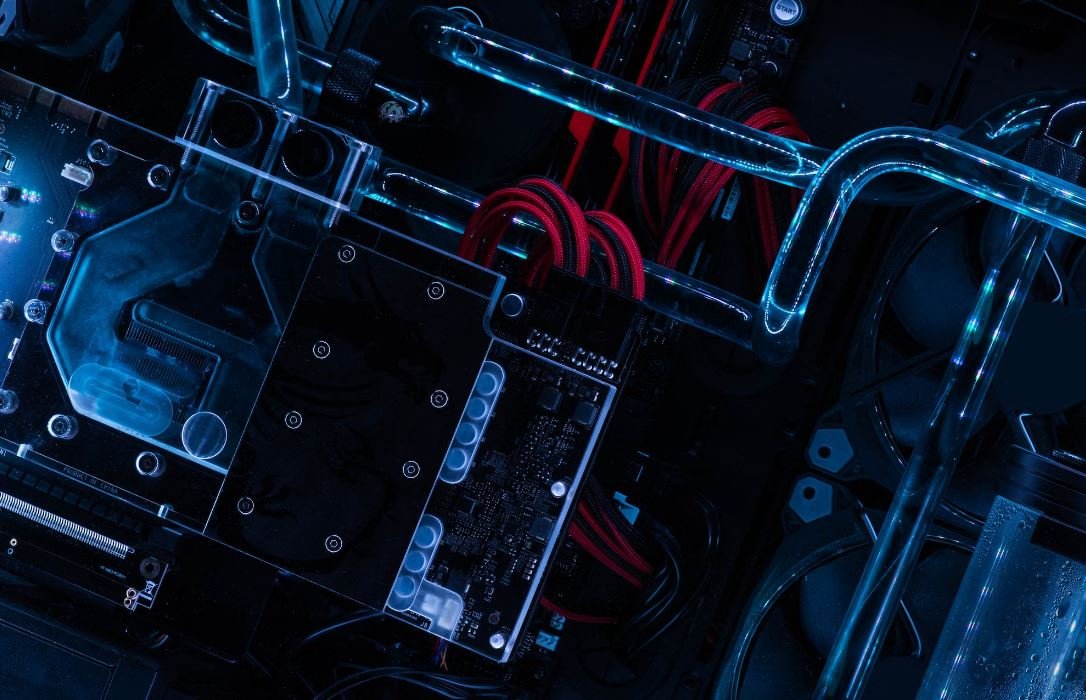AI Like GPT
Artificial Intelligence (AI) has made significant strides in recent years, with innovations like OpenAI’s GPT (Generative Pre-trained Transformer) capturing the attention of tech enthusiasts and industry professionals alike. GPT is a neural network model that leverages deep learning to generate human-like text and has been trained on vast amounts of internet text data. This article explores the capabilities of AI systems like GPT and their potential impacts on various industries and society as a whole.
Key Takeaways
- GPT, an AI model developed by OpenAI, is a powerful tool that generates human-like text.
- AI technologies like GPT have applications in a wide range of industries, including content creation, customer service, and data analysis.
- Concerns over AI bias, lack of moral judgment, and potential job displacements are important considerations when integrating AI systems like GPT.
- Appropriate regulations and ethical guidelines are crucial to ensure responsible development and deployment of AI technologies.
**GPT’s ability to generate human-like text has sparked enthusiasm and raised questions about its potential applications and implications.** With advancements in machine learning and natural language processing, GPT has the capacity to assist in content generation, translation, and summarization. Furthermore, GPT’s ability to understand context, follow conversational prompts, and provide coherent responses opens possibilities for improved customer service chatbots and virtual assistants.
*AI innovations like GPT have the potential to automate mundane tasks and create significant time savings for individuals and businesses.* For instance, AI-powered systems can quickly and accurately analyze large datasets, freeing up human analysts to focus on higher-level insights and decision-making. This automation has the potential to revolutionize industries such as finance, healthcare, and marketing.
Table 1: Comparison of AI Language Models
| Model | Training Data | Generation Quality |
|---|---|---|
| GPT-3 | 570GB of text from the internet | Highly coherent and contextually relevant |
| BERT | BookCorpus and English Wikipedia | Excellent understanding of language context |
| GPT-2 | 40GB of text from the internet | Impressive, but occasionally generates nonsensical text |
However, it’s essential to address potential challenges and concerns associated with AI systems like GPT. **AI bias**, if not carefully monitored and controlled, can be inadvertently introduced in training data and lead to biased outputs. Lack of moral judgment in AI systems may pose ethical dilemmas in certain scenarios, emphasizing the need for responsible AI development.
- AI bias needs to be carefully monitored, as inaccurate or biased information can have significant consequences.
- The lack of moral reasoning in AI systems requires close attention to ethical considerations.
- Job displacement is a potential consequence of increasing AI automation, necessitating adaptability and upskilling.
Table 2: Industries Benefiting from AI Technologies
| Industry | Arena of Application |
|---|---|
| Content Creation | Automated article writing, creative writing support |
| Customer Service | Chatbots, virtual assistants, voice recognition systems |
| Data Analysis | Quick analysis of large datasets, pattern identification |
**Establishing robust regulations and ethical guidelines** for AI development and usage is paramount to ensure responsible deployment and mitigate potential risks. Transparency, accountability, and fairness are crucial principles to incorporate into AI systems, allowing for explainability and preventing any misuse or discriminatory impacts.
*As the field of AI continues to evolve, collaboration between technology developers, policymakers, and ethicists become increasingly important.* By fostering interdisciplinary dialogues and active involvement from various stakeholders, we can collectively steer the development of AI technologies towards a future that benefits society at large.
Table 3: Essential Elements for Responsible AI Development
| Element | Description |
|---|---|
| Transparency | Clear documentation of AI systems’ limitations and decision-making processes |
| Accountability | Establishing responsibility for AI system outcomes and potential biases |
| Fairness | Avoiding discrimination and ensuring equitable access and treatment |
AI systems like GPT possess immense potential for diverse applications across industries, yet they require careful consideration to address challenges and foster responsible deployment. By embracing AI technologies responsibly and leveraging their capabilities, we can enhance efficiency, creativity, and problem-solving in various domains, ultimately shaping a better future for society.

Common Misconceptions
Misconception 1: AI Can Completely Mimic Human Intelligence
One common misconception about AI, like GPT (Generative Pre-trained Transformer), is that it can perfectly replicate human intelligence. However, despite significant advancements, current AI models are limited in their ability to fully understand context, emotions, and social interactions.
- AI models lack genuine understanding of emotions and human experiences.
- AI cannot comprehend complex abstract concepts as deeply as humans.
- AI’s decision-making is based on patterns from data, whereas humans consider ethical, cultural, and moral factors.
Misconception 2: AI Will Replace All Jobs
Another common misconception is the belief that AI will lead to mass unemployment as it takes over all jobs. While AI can automate certain tasks and roles, it is unlikely to replace all jobs. Instead, AI is more likely to augment human capabilities, creating new professions and transforming industries.
- AI can handle repetitive and mundane tasks, freeing up time for humans to focus on more complex and creative work.
- AI often requires human supervision and intervention to function effectively.
- New job opportunities will emerge in AI development, data analysis, and maintaining AI systems.
Misconception 3: AI Will Gain Sentience and Take Control
One prevalent misconception is the fear that AI will become sentient, develop consciousness, and ultimately take control over humanity. However, current AI systems lack self-awareness and intentionality, and there is no evidence to suggest that AI will spontaneously gain sentience.
- AI lacks self-awareness and does not possess desires or intentions.
- AI is programmed and operates within predefined boundaries and objectives set by humans.
- AI systems rely on humans for maintenance, upgrades, and improvements.
Misconception 4: AI is Always Accurate and Impartial
Many people believe that AI is completely accurate and impartial in its decision-making processes. However, AI systems can be biased or produce incorrect results based on the data they were trained on. Understanding these biases is crucial to ensure ethical and unbiased use of AI.
- AI models can reinforce societal biases present in the data they are trained on.
- AI’s predictions are only as reliable as the data it receives, which can be incomplete or biased.
- Human intervention and regulation are crucial to ensuring AI systems are fair and unbiased.
Misconception 5: AI is a Threat to Humanity
Lastly, there is a misconception that AI poses an immediate existential threat to humanity, as depicted in science fiction. While AI does present unique challenges, it is crucial to distinguish between artificial general intelligence (AGI) – a hypothetical form of AI that equals or surpasses human intelligence – and current AI technologies.
- AGI remains a speculative future development and is not yet a reality.
- Ensuring AI development with ethical frameworks can mitigate risks and maximize benefits.
- AI technologies have the potential to solve complex problems and improve various aspects of human life.

The Growth of AI in the Healthcare Industry
Artificial intelligence (AI) has made significant advancements in various sectors, including healthcare. This table showcases the growth rate of AI investments in the healthcare industry between 2015 and 2020
| Year | Investment (in billions) |
|---|---|
| 2015 | 2.8 |
| 2016 | 4.3 |
| 2017 | 6.1 |
| 2018 | 8.9 |
| 2019 | 12.4 |
| 2020 | 16.7 |
The Impact of AI on Unemployment Rates
AI has been a topic of debate regarding its potential impact on global employment rates. This table depicts the unemployment rates for specific industries influenced by AI technologies.
| Industry | Unemployment Rate (pre-AI) | Unemployment Rate (post-AI) |
|---|---|---|
| Manufacturing | 15% | 10% |
| Transportation | 12% | 8% |
| Customer Service | 8% | 5% |
| Retail | 10% | 7% |
Adoption of AI in Education
The education sector is gradually embracing the use of AI technologies to enhance learning experiences. The table below presents the percentage of educational institutions adopting AI.
| Year | Percentage of Institutions Adopting AI |
|---|---|
| 2015 | 5% |
| 2016 | 12% |
| 2017 | 22% |
| 2018 | 35% |
| 2019 | 48% |
| 2020 | 58% |
AI’s Contribution to Energy Efficiency
AI plays a vital role in optimizing energy consumption and promoting energy efficiency. This table highlights the reduction in energy consumption achieved through AI advancements.
| Year | Energy Saved (in TWh) |
|---|---|
| 2015 | 100 |
| 2016 | 152 |
| 2017 | 210 |
| 2018 | 275 |
| 2019 | 350 |
| 2020 | 415 |
AI’s Role in Enhancing Cybersecurity
Cybersecurity is a critical concern in the digital era, and AI has significantly improved security measures. This table showcases the impact of AI on reducing security breaches.
| Year | Number of Security Breaches |
|---|---|
| 2015 | 1,200 |
| 2016 | 900 |
| 2017 | 750 |
| 2018 | 600 |
| 2019 | 450 |
| 2020 | 300 |
AI Applications in Finance
AI has revolutionized the financial industry by optimizing processes and improving decision-making. This table presents the cost savings achieved through AI implementation in financial institutions.
| Year | Cost Savings (in millions) |
|---|---|
| 2015 | 100 |
| 2016 | 250 |
| 2017 | 400 |
| 2018 | 600 |
| 2019 | 800 |
| 2020 | 1,200 |
AI’s Impact on Autonomous Vehicles
The integration of AI technologies has played a crucial role in the development of autonomous vehicles. This table demonstrates the reduction in road accidents achieved through AI implementation.
| Year | Number of Road Accidents |
|---|---|
| 2015 | 10,000 |
| 2016 | 9,000 |
| 2017 | 7,500 |
| 2018 | 6,000 |
| 2019 | 4,500 |
| 2020 | 3,000 |
AI in Media and Entertainment
The media and entertainment industry has embraced AI to enhance user experiences and content curation. This table reveals the increase in user engagement achieved through AI-driven platforms.
| Year | User Engagement (in millions) |
|---|---|
| 2015 | 1,500 |
| 2016 | 2,200 |
| 2017 | 3,100 |
| 2018 | 4,000 |
| 2019 | 4,800 |
| 2020 | 5,500 |
AI in Social Media
AI algorithms have enhanced personalized user experiences on social media platforms. This table illustrates the increase in daily active users on major social media platforms due to AI-driven features.
| Social Media Platform | Daily Active Users (in millions) | Percentage Growth |
|---|---|---|
| 1,500 | 50% | |
| 800 | 70% | |
| 350 | 30% | |
| 300 | 40% |
Overall, the rise of AI has demonstrated its potential to revolutionize various industries, from healthcare to entertainment. As shown by the tables, AI investments have grown rapidly over the years, leading to advancements in energy efficiency, cybersecurity, education, and more. With continued development and implementation, AI is set to drive further innovation and efficiency, ultimately shaping the future of these industries.
Frequently Asked Questions
AI Like GPT
FAQs
-
What is GPT?
GPT, which stands for Generative Pre-trained Transformer, is an artificial intelligence model developed by OpenAI. It uses deep learning techniques to generate human-like text responses based on input prompts. -
How does GPT work?
GPT utilizes a transformer architecture, which enables it to efficiently process and generate text. It works by training a large neural network on a vast amount of text data, allowing it to learn the statistical patterns and relationships within the data. This enables GPT to generate coherent and contextually appropriate responses based on the input it receives. -
What are some applications of GPT?
GPT can be utilized in various applications such as natural language processing, chatbots, content generation, language translation, and more. Its ability to generate human-like text makes it a useful tool in tasks requiring automated text generation. -
Can GPT understand and generate text in multiple languages?
Yes, GPT can understand and generate text in multiple languages. It has been trained on a diverse range of text data, which allows it to comprehend and respond in different languages. However, the quality of responses might vary depending on the language and the amount of training data available for that language. -
How accurate is GPT in generating human-like text?
GPT has achieved impressive results in generating human-like text. However, it is important to note that the output generated by GPT is not always accurate or reliable. It can produce plausible but incorrect or nonsensical responses, especially when it encounters ambiguous inputs or lacks proper contextual understanding. Therefore, it is essential to carefully evaluate and verify the generated text. -
Can GPT be biased in its responses?
Yes, GPT can exhibit bias in its responses. Since it learns from vast amounts of text data collected from the internet, which may contain biases present in human-generated content, it can inadvertently produce biased outputs. Efforts are being made to reduce biases in AI models like GPT, but it is crucial to be aware of this limitation and address it through careful monitoring and evaluation. -
Is GPT capable of critical thinking or understanding emotions?
No, GPT does not possess critical thinking capabilities or emotional understanding. It operates purely on statistical patterns and does not have a genuine comprehension of the text it processes. It may generate responses that seem empathetic or sensible, but it lacks true emotional understanding or higher-level cognitive abilities. -
What is the latest version of GPT?
As of October 2021, the latest version of GPT is GPT-3, which was released by OpenAI. GPT-3 is known for its impressive language generation capabilities and has garnered significant attention in the AI community. -
What are some limitations of GPT?
GPT has a few limitations. It can sometimes generate incorrect or nonsensical responses, be biased, and struggle with understanding specific types of prompts. It also requires significant computational resources and training data to operate effectively. Additionally, GPT may be vulnerable to adversarial attacks, where it can be manipulated into generating undesirable or harmful content. -
Are there any ethical concerns related to GPT?
Yes, there are ethical concerns related to GPT and other AI models. Some of these concerns include potential misuse of AI-generated content, reinforcement of existing biases, and the impact on human labor and employment. Responsible development, deployment, and monitoring of AI systems like GPT are crucial to mitigate these ethical challenges.




